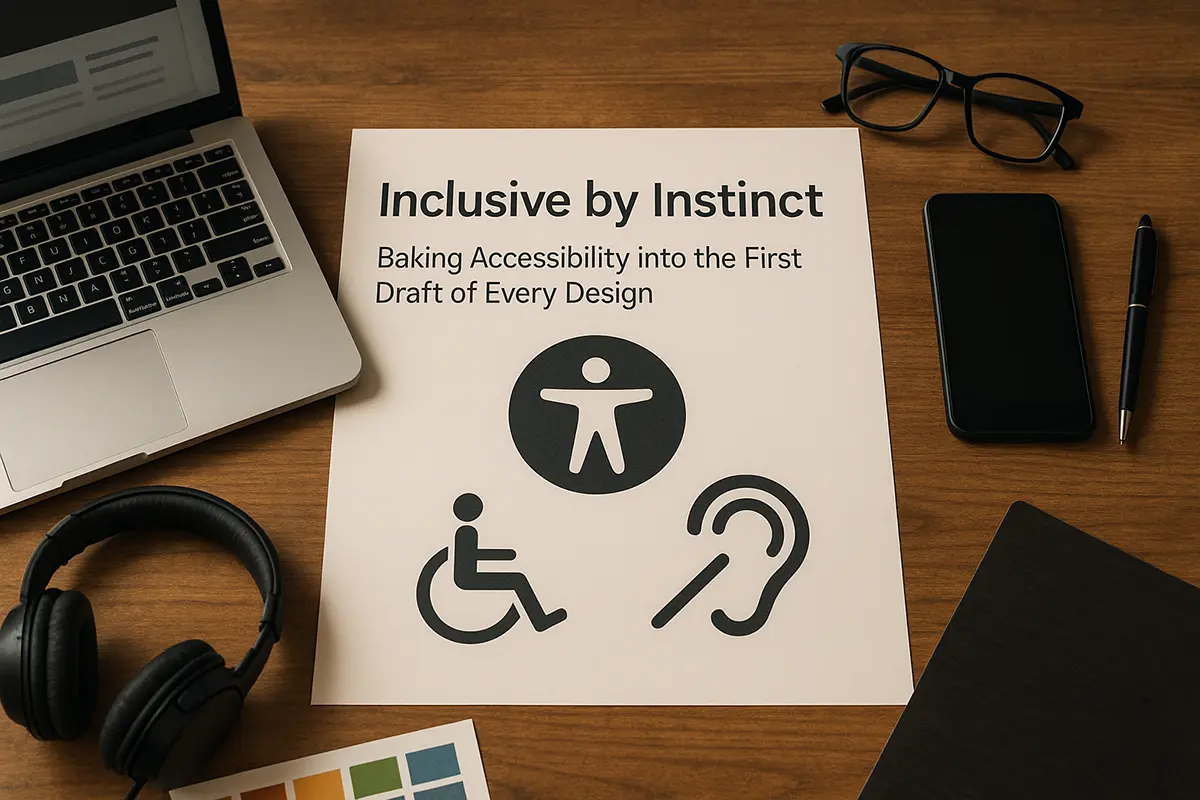Design is never neutral.
Every choice we make, the colour of a button, the placement of a menu, or the structure of a sentence, either includes someone or excludes them.
For too long, accessibility has been treated as a bolt-on or a checklist item added at the end of the design process. But when we treat accessibility as an afterthought, we miss the opportunity to create something truly inclusive, intuitive, and impactful from the start.
The most progressive designers and brands are shifting their mindsets. They’re not designing for accessibility; they’re designing with accessibility in mind from the first sketch, the first wireframe, and the first draft. Accessibility is no longer a compliance task. It’s a core creative principle.
Design That Includes More People Includes More Possibility
When accessibility is integrated from the beginning, it benefits everyone, not just those with disabilities. It makes experiences clearer, more usable, and more enjoyable.
A website with strong colour contrast isn’t only better for people with visual impairments; it’s also better in sunlight, on a scratched screen, or when your eyes are tired. Captions don’t just help those with hearing loss; they also assist in loud offices, quiet libraries, and multitasking.
This is what it means to design for the edges: the understanding that solving for one group often solves for many. Inclusive design isn’t a constraint. It’s a catalyst.
From Compliance to Creativity
The most powerful shift a designer can make is to stop asking, “Does this meet the accessibility guidelines?” and instead ask, “Who might be left out by this design, and how can I invite them in?”
It’s not about ticking boxes. It’s about imagination. It means building empathy in every design decision, considering screen readers when writing headlines, considering motor control when laying out interactive elements and choosing words that are plain, direct, and readable.
This approach doesn’t slow down the creative process; it sharpens it. Constraints often breed better ideas. The earlier accessibility is embedded in the process, the less time and money it takes to implement.
Building Accessible Instincts
Good designers already have strong instincts for hierarchy, rhythm, and balance. Adding accessibility to that instinctive toolkit means developing an intuitive feel for what works across a wider range of users.
This might mean:
- Using semantic HTML elements from the start, rather than retrofitting ARIA labels later
- Choosing typefaces for legibility first, aesthetics second
- Thinking about keyboard navigation with the same care as touchscreen gestures
These aren’t just technical tweaks. They’re signs of respect. They say to the user, “You were considered here.”
Accessibility Is Everyone’s Job
Designers may lead the process, but accessibility is a shared responsibility. Writers, developers, strategists, and project managers all have roles to play. Everyone involved in creating an experience should be asking: Is this understandable? Usable? Reachable? Fair?
In organisations where accessibility is instinctive, those questions are just part of the culture. There’s no need for a dedicated “accessibility sprint” because every sprint is accessible by default.
Designing for Dignity
Inclusive design is not about perfection. It’s about being proactive, recognising that our work has real-world impact, and choosing to make that impact as broad and generous as possible.
When accessibility becomes part of our design instinct, we stop seeing it as extra work and start seeing it as an essential craft. We stop designing just for users and start designing for people.
Stand Out with Taesea’s Innovative Solutions
If you’re interested in learning more about how Taesea can assist your business in developing your brand, marketing, and design requirements, please do not hesitate to contact us. We have a team of experts who are passionate about creating innovative and effective solutions that will help your business stand out in the market. Contact us today to learn more about our services and how we can help your business succeed.






